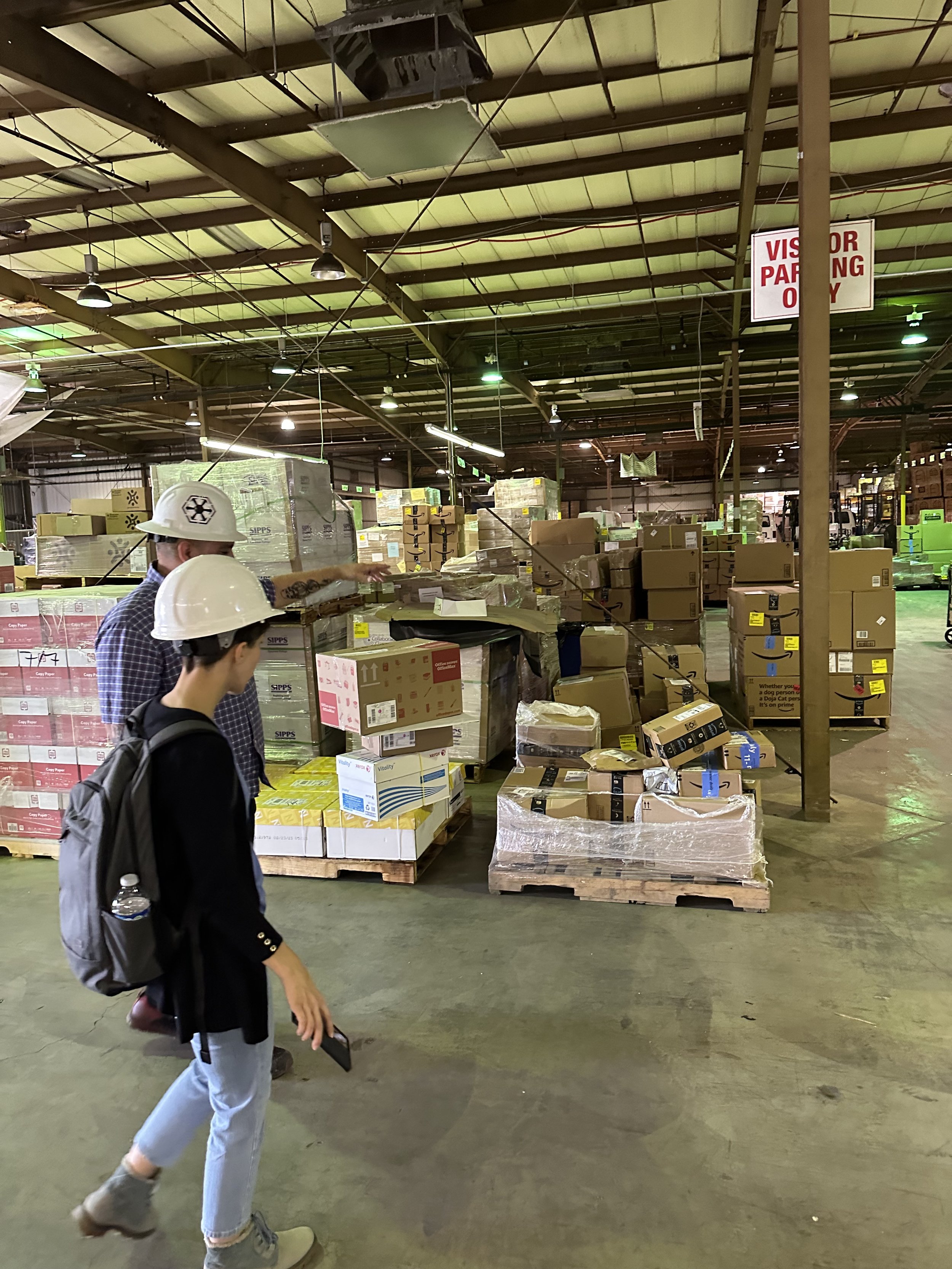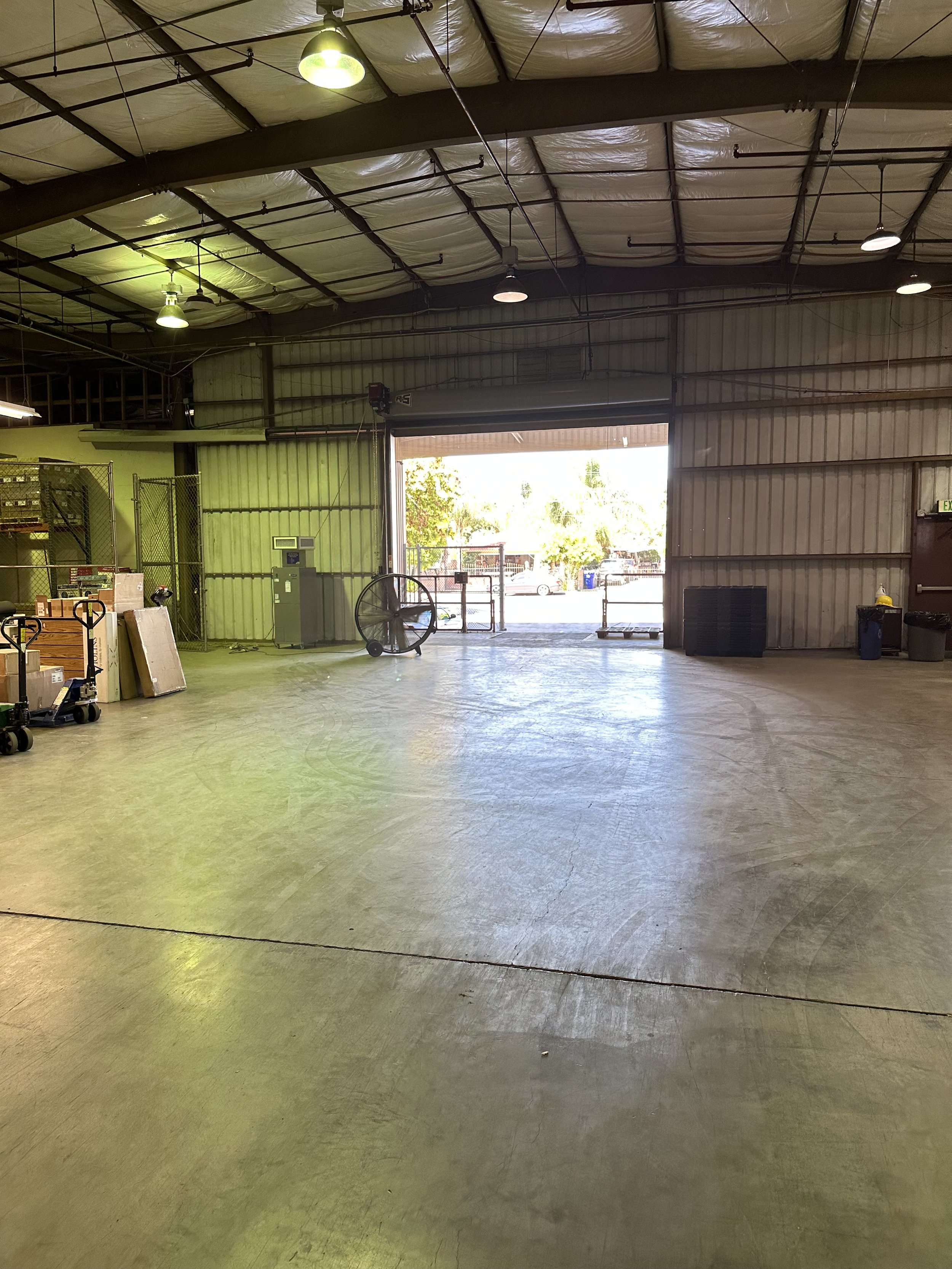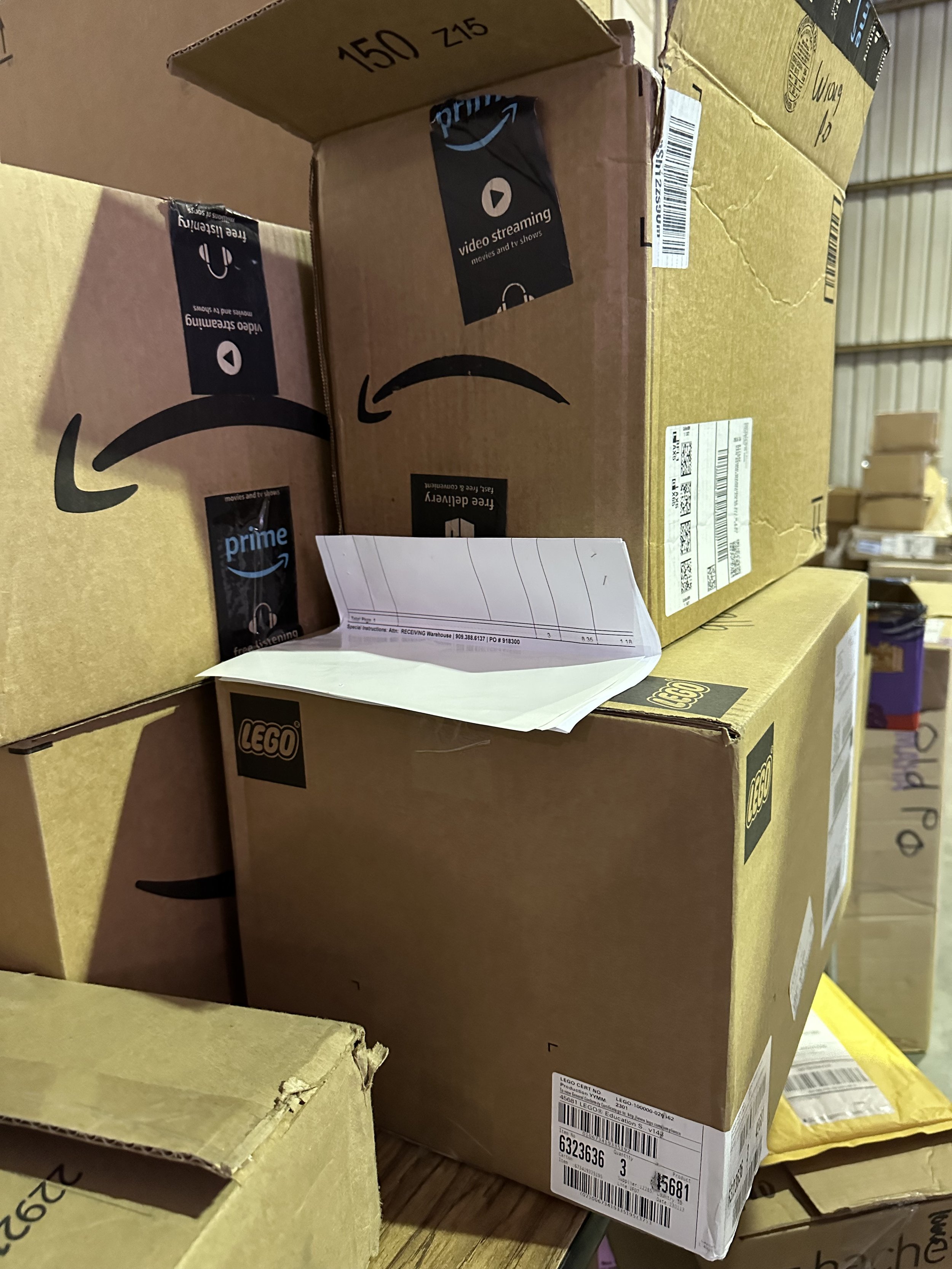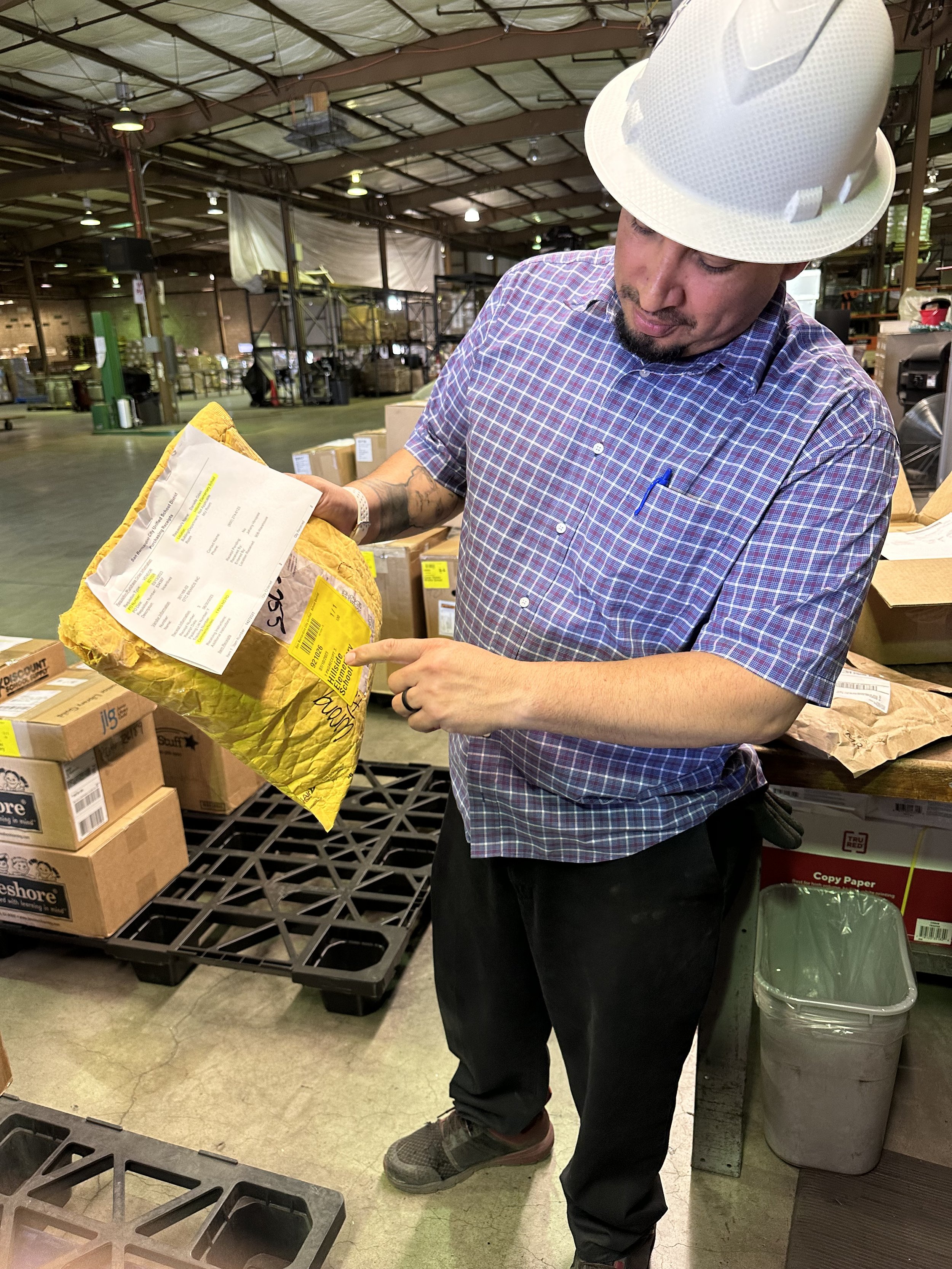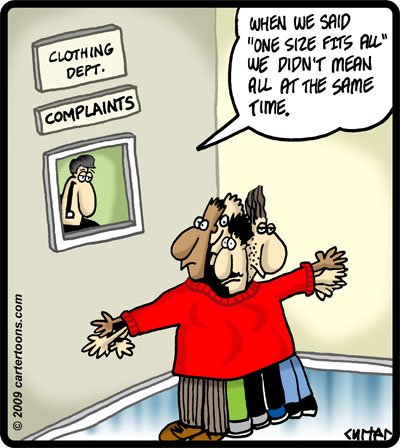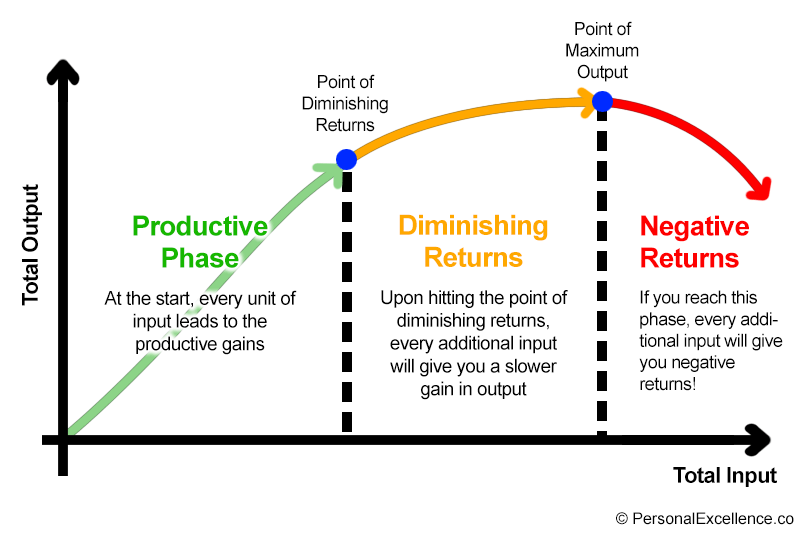Make it rain
While the corporate knowledge workers were at their desks, toiling away in chime meetings, writing PR FAQs, and trying to influence each other over political charades, the customers received pallets resembling cardboard forts found in homeless encampments under freeways. How might we design a system that reduces operational, environmental, and cognitive waste?
Working backwards
Case study 1: Working directly with the customer.
People
Curious about what customers manage and struggle with daily, I connected with the sales staff to learn what they understood about customers. Sales were looking for solutions to resolve downstream shipping issues, so they invited me to do a ride-along, visit the site of a strategic account, and get direct exposure to an enterprise customer.
I invited a designer to expose her to what conducting field research was like. It was a great experience - we got to wear hard hats! More importantly, we saw the customers' internal operations and how they ordered and received bulk shipments from Amazon sorting facilities. The process was revealing - it was evident that the upstream design process had an erosive downstream impact.
Process
Customer Purchasing, Receiving, Sorting Center
Pallets are delivered in trucks to fenced warehouses located in residential areas.
When drivers arrive at the warehouse to find it closed, they may leave the packages outside of the fence, which will generally get stolen. In rare cases, staff may find packages left outside before theft occurs.
If there are notifications to the receiving staff from the carrier during off hours, it may not result in someone being available to receive. In some cases, the carrier will take the payload back to the supplier, and in some cases, they leave it on-site in an unguarded area.
There are many delivery options: direct deliveries by Pallet, post office deliveries, and deliveries by Amazon small vans.
User Personas
The Purchasing Manager (Aka Category Manager) is the one who runs the day-to-day operations of the warehouse. This particular account had homegrown tracking solutions tied to its accounting system. They didn’t use the Amazon solutions because they were not designed to support the customer’s workflow and accounting needs.
The Warehouse Manager is someone who quality assures and helps the staff to remediate issues, trains, and maintains the culture.
Purchasing is centralized and the Purchasers are based in the warehouse, not in the schools.
Ordering by requisitioners (aka buyers) is decentralized.
The requisitioners have to type the ASIN in their system and provide a description. Some of them may attach their wishlist. The category buyer will receive the requisition and review it for approval. At the end of fiscal year they have around 2000 in the queue.
This customer is not using 3-way Matching. They started to scan tracking numbers but it didn’t work because it picks up other shipping labels. Their accounting system does not have Amazon integrations because the Amazon tool was not designed to address the customer’s use cases.
Additional Labor for Sorting Mixed Pallets
The warehouse receives shipments of pallets by date received. Pallets that are more uniform, such as the pallet with boxes of paper, have an SOP that staff can sort and label for distribution to requisitioners easily. Mixed pallets from Amazon require staff to move to a dedicated sorting area in the warehouse during busier times as the staff will require more time and physical space to sort, reorganize and print labels to affix for distribution. At its worst the backup is around 2 months.
Mixed Pallet Variability
Smaller packages crushed under heavier packages
If not damaged from getting crushed, smaller items can get damaged from below where the pallet forks are inserted.
Sorting of boxes to PO and purchasing slips are often incongruent.
Unclear which label to scan.
Some of the labels, when scanned, do not indicate what’s in the PO and therefore all boxes must be opened to search for the packing slip.
Boxes and items in the boxes are re-sorted and re-organized to complete POs.
Confirmation of items from POs were received is required before invoices from Amazon are paid.
Pallets with old POs are returned and the warehouse won’t accept them.
Too Many Labels
So many labels are affixed to the packages in the pallet, it is unclear how they are all associated.
It is unclear whether all boxes are from the same PO or belong to different POs
Need to open all packages to find the packing slip.
Which label is the right one to scan?
If Amazon labels 1 out of 3 on boxes and paperwork, it only helps if all boxes are received at the same time. Otherwise, 1 of 3 means nothing to the receiver as it might be mixed with other packages with numbers in a subsequent shipment.
No Sort Center Logic
Mixed pallets will need to get moved to another location as it’s unclear if the entire PO is in the one pallet or sorted into multiple pallets.
Inconsistent Branding on Labels
Many boxes ship directly from suppliers even when the items inside were purchased on Amazon. It was not clear that these boxes were purchased on Amazon. The labels do not have Amazon branding as they arrived from a 3P carrier. Some of the 3P packages don’t have the packing slip inside.
Multiple Logistics Carriers
Boxes arrive from UPS, USPO, and other 3P carriers even when the items were purchased on Amazon. It was not clear that these boxes were purchased on Amazon. The only way for the customer to tell from the label is the tiny CDW number on the top left corner of the label.
Packing slips are not standardized.
Suppliers/sellers print from a variety of tools and services that may not have all of the numbers that the customer needs.
Sometimes it is not clear what the numbers are for. Staff have to guess what is an ASIN, item number or other and staff will have to enter whichever number they think it may be into their purchasing tool to match the item to a PO.
Duplicate Packing Slips
Sometimes there are multiple packing slips with identical information. They may have had different requisitioners order the same item or it may be a duplicate.
When there isn’t a PO associated with the packed item, it can be any number of scenarios. It’s unclear what the most common use case is for this customer.
Offline and Online Troubleshooting
When they have packages from Amazon that are missing packing slips or have them but are not associated with a PO, the staff will search their accounting tool.
Many more scenario recordings are not shared here, but I can assure you that the entire end-to-end workflow for warehouse workers and people on the receiving end is cumbersome and loaded with defects.
Product
After several scenario recordings, I led the team into a brave new world of working directly with customers through the sales channels. We listened and mapped workflows, then experimented with custom solutions that addressed a panoply of use cases. The product, in this case, was not exclusively UI. Companies must understand that a product is a confluence of people and processes before a product. The output can be physical or experiential but not limited to the screen and walled off from the rest of the operations. Working within the constraints of the organization, I created cross-functional work groups that made an innovation pipeline to generate higher-quality output than previously established. I worked directly with the customers to iterate through their problem space. The result was relationships that broke down the operational silos and solutions that addressed how customers needed to shop for their business.
With the learning inputs available, product design was kicked off with a cross-functional team. Starting with an examination of the end-to-end workflow that customers had to go through compared to what they needed to achieve for their business, the team found breakpoints and where there were gaps in processes that software or humans were required to fulfill.
Our work generated a pipeline of experiments that the team committed to continuing to work on for ongoing optimization and learning. This process was galvanizing and facilitated deep collaboration amongst the team. The customers felt heard and trusted Amazon Business to help them with their needs.
Real Talk
A complex system in motion can not be directed. It can only be influenced. As Kenneth Boulding once said, “Don't go to great trouble to optimize something that should never be done at all.” In this case, it was the UI. A distributed team of designers over-optimized the buying experience without understanding the conditional workflows.
Amazon Business emerged from the behavior of retail customers purchasing in bulk. The primary learning method for said customers was sending out surveys to determine whether they were buying for business or personal. The role of the design staff was effectively reduced to creating widgets, input fields, buttons, and templated layouts to run usability studies with internal experts to validate design decisions without a deep understanding of customer use cases and workflows. The design team wanted a seat at the table; however, when one was available, they had no new or meaningful data about the customers that the product team couldn’t infer from analytics.
The price of not understanding the customer value stream had a significantly longer long-term impact than the drop-off in engagement at any particular point. The real issues were in operations, and the design team, unfortunately, complicated the operations by designing things that created more to manage for operators.
“It is difficult to get a man to understand something, when his salary depends on his not understanding it.”
“The constant curse of scale is that it leads to big, dumb bureaucracy—which, of course, reaches its highest and worst form in government where the incentives are really awful.”
The Scaling Fallacy
The belief that a system that works at one scale will also work at a much larger or much smaller scale is a scaling fallacy. The complexity of Amazon’s system reflects its organizational structure and dysfunctions. The resulting operational silos are an unfortunate by-product that is baked into their flywheel. Still, Amazon has made purchasing things (we likely don’t need) easy—something to be celebrated and not questioned in the annals of user experience design.
I was tasked with understanding why more enterprise customers weren’t ordering using their Amazon Business Prime accounts and devising experiments to increase the throughput. To know why, I deployed a simple three-step process: I learned about the people involved and their processes and then worked with the customer to design the product experience. There are fancy terms and acronyms, but understanding people and processes and developing the products is the gist of what a designer must do to deliver results. At the end of the cycle, we learned that the retail experience was more accessible for enterprise buyers in the public sector because the end consumers were used to spot-buying for their needs only, not for the needs of an entire department or division. A department or regional operation clerk aggregates all the items from the requisitioners and then collates them into a spreadsheet for the corporate buyers.
The deliveries to the warehouses ultimately had to be broken down and distributed to the requisitioners, which meant Amazon Business was creating more work for the customers’ warehouse receiving departments. This was revealing because what they needed was/is bulk pricing and ordering with retail shipping downstream. Enterprise buyers didn’t need the half-baked tools for ordering - they needed APIs for their procurement systems to pull Amazon retail catalogs into their existing tools. Amazon Business developed a monolithic application that ballooned into a massive operation with layers and layers of people designing hammers to look for nails.
The customer valued flexibility in customization that met their unique delivery needs, and Amazon Business valued throughput. These values can be contradictory when the balance is tipped toward the business instead of the customer. Amazon is about throughput. The more you order, the cheaper each unit will be until the supplier bleeds out and Amazon replaces the supplier with Amazon-branded products.
Amazon seduces sellers/suppliers to sell on its platform with incentives. The initial drip of a gold rush keeps sellers optimizing their business, teaching Amazon how to sell through product categories and compete with its sellers. Over time, the drip goes away when a supplier’s product has more competition or becomes commoditized, and they reach a point of diminishing returns. This system ultimately trains users on quantity instead of quality (often fewer products to select from). Just as Facebook and other social media companies are accused of creating echo chambers, Amazon does the same thing to drive sell-through at all costs - that’s the operational fly-wheel. I took a neutral stance on the FTC lawsuit alleging that Amazon engaged in anticompetitive and monopolistic practices. I came out with a knowledge of how many large organizations are designed to obfuscate the truth.
Organized by a greedy algorithm
At Amazon, everyone operates in their respective silos. The orgs are modeled like assembly lines - everyone is expected to operate in their dedicated swim lanes. People are effectively cogs. During my interviews, the recruiter said, “We want leaders to be fungible resources.” I found that to be an interesting choice of words, considering I was hired to lead the personalization of the patient experience at Amazon Care.
The company prides itself on its peculiar ways, including calibrating staff. HR doesn’t have suitable methods to adequately plan resources based on the variability of the problems that must be solved; therefore, they rely on a greedy algorithm derived from a manufacturing paradigm to measure people. This means you are rated, as a manager, on getting as many people into the pipeline as possible to set yourself up for success in meeting your quota of people to pivot to prove that you are an effective line worker. This is their way of reducing entropy in a bloated org. They don’t use those terms but should consider doing so to keep it honest. Many people get hired to do busy work that brings little to no value to customers. The ongoing pruning that becomes the job of leaders is a form of reducing overfitting in the dataset, which suggests that their forecasting and prediction models were off. But why continue using the same models that create so much cognitive dissonance and churn? I pondered this often and discovered it is best to apply Hanlon’s Razor when considering this problem.



